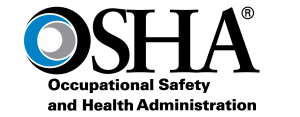Medical screening is a method for detecting disease or body dysfunction before an individual would normally seek medical care. Screening tests are usually administered to individuals without current symptoms, but who may be at high risk for certain adverse health outcomes.
Medical surveillance is the analysis of health information to look for problems that may be occurring in the workplace that require targeted prevention. Thus, surveillance serves as a feedback loop to the employer. Surveillance may be based on a single case or sentinel event, but more typically uses screening results from the group of employees being evaluated to look for abnormal trends in health status. Surveillance can also be conducted on a single employee over time. Review of group results helps to identify potential problem areas and the effectiveness of existing worksite preventive strategies. The following resources contain medical surveillance information including specific hazards and surveillance guidelines.

The following references provide information about medical screening and clinical evaluation:
- Proceedings of the VIIth International Pneumoconioses Conference. U.S. Department of Human Health Services (DHHS), National Institute for Occupational Safety and Health (NIOSH) Publication No. 90-108, (August 1988).
- Screening and Surveillance: A Guide to OSHA Standards. OSHA Publication 3162, (2000). Provides a reference guide to help you locate and implement the screening and surveillance requirements of the OSHA standards.
WHAT IS OSHA?
OSHA: PRIVATE SECTOR FEDERAL & STATE PLANS
OSHA covers most private sector employers in all 50 states, the District of Columbia, and other U.S. jurisdictions—either directly through federal OSHA or through an OSHA approved state plan.
- State plans are OSHA-approved job safety and health programs operated by individual states instead of federal OSHA. State-run safety and health programs are required to be at least as effective as the federal OSHA program.
- Federal OSHA approves and monitors all state plans and provides as much as fifty percent of the funding for each program. Federal OSHA provides coverage to certain workplaces specifically excluded from a state’s plan — for example, work in maritime industries or on military bases.
OSHA: STATE AND LOCAL GOVERNMENTS
Workers at state and local government agencies are not covered by federal OSHA, but have OSH Act protections if they work in those states that have an OSHA-approved state program. OSHA rules also permit states and territories to develop plans that cover only public sector (state and local government) workers. In these cases, private sector workers and employers remain under federal OSHA jurisdiction.
FEDERAL GOVERNMENT AGENCIES
OSHA’s protection applies to all federal agencies. Section 19 of the OSH Act makes federal agency heads responsible for providing safe and healthful working conditions for their workers. OSHA conducts inspections of federal facilities in response to workers’ reports of hazards and under programs that target high hazard federal workplaces. Federal agencies must have a safety and health program that meets the same standards as private employers. OSHA issues “virtual fines” to federal agencies – following an inspection where violations are found.
Not covered under the OSHA Act
The self-employed; immediate family members of farm employers; and workplace hazards regulated by another federal agency.

